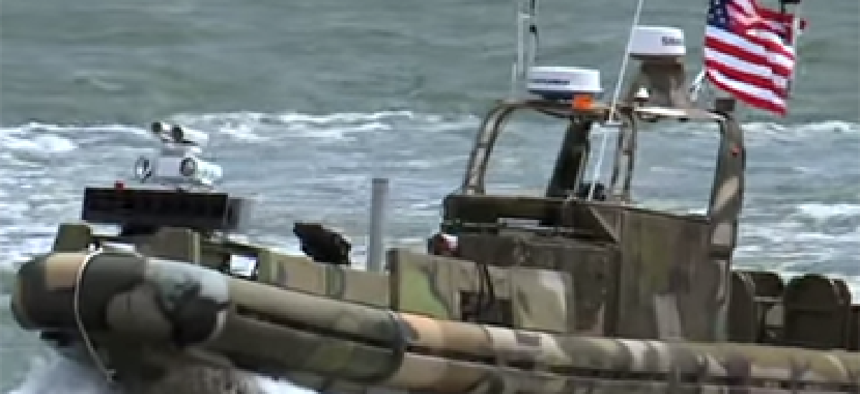Navy takes another step in developing drone boats

The Office of Naval Research says a technological breakthrough will pave the way for the use of unmanned boats to detect threats and launch attacks.

The boats could be deployed in dangerous areas to avoid casualties and are considerably cheaper than manned boats.
The Navy is claiming a technological breakthrough in its use of unmanned boats to detect a threat and swarm an enemy vessel in response.
The Office of Naval Research announced Oct. 5 that it demonstrated the swarming capability over the course of two weeks in August on the James River in southeastern Virginia. Those demonstrations involved as many as 13 boats that used either autonomous or remote control, the office said in its announcement.
Underpinning the "swarm boats" is a technology called Control Architecture for Robotic Agent Command and Sensing. It is a combination of hardware and software that features a small circuit board that can turn a boat into an unmanned system. The Navy adapted parts of CARACAS from technology NASA used for the Mars rover programs.
The demonstrations were "a cost-effective way to integrate many small, cheap and autonomous capabilities that can significantly improve our warfighting advantage," Chief of Naval Operations Adm. Jonathan Greenert said in a statement.
The Office of Naval Research said the drone boats "could revolutionize the way the service defends people, ports, waterways and commerce."
As with aerial drones, the boats could be deployed in dangerous areas to avoid casualties.
And they are considerably cheaper than manned boats. In a recent briefing with reporters, Chief of Naval Research Rear Adm. Matthew Klunder called the unmanned boats "extremely affordable" and noted that the parts for each circuit board cost about $2,000.
The Navy's advancement of swarm boats comes near the 14th anniversary of a terrorist attack on the USS Cole that killed 17 sailors and injured 39. Klunder said swarm boats could have prevented that attack.
Kevin McCaney, editor of Defense Systems, contributed to this report.





